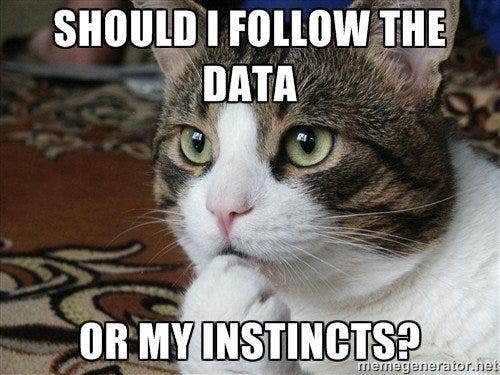Marketing Operations Series: Attribution Hierarchy and why it matters
Google posted its earnings yesterday and ad revenue is down. Remember, Google’s revenue is someone else’s expense. Companies are tightening the belt and digital advertising is a casualty of that.
There’s no more important time to revisit your attribution than now.
If you’re going to optimize the number of qualified leads reaching you at a lower cost per X (per impression, per click) you’ll need to know which ads, copy, terms, and sources are driving the very best leads.
So let’s go over a simple process which is just plain common sense, but not necessarily consistent common practice. Over time it’s easy to let the state of your attribution decay.
Here’s the 4 step process I use:
Define your UTM parameter standards
Define your Campaign Formula
Clean up historical data
Review
If you set the data straight, you’ll hopefully be able to answer this question:
UTM standards
Tracking your digital marketing campaigns closely means more effective marketing campaigns overall. Knowing precisely what is generating traffic informs you where your advertising dollars are working the best. Do banners drive more traffic to your content or do social profiles? Adding a UTM to any URL makes this detailed information available, allowing you to create a better strategy for increasing traffic and conversions therein.
It is possible to probe beyond the standard information available via Google Analytics. One way of collecting detailed performance data is to use a UTM. This surprisingly streamlined feature makes for more intimate tracking of links. A UTM or Urchin Tracking Module is simply an extension added to your URL. This easy modification lets you track specific details about your campaigns in Google Analytics or similar programs. These additional bits of text tell analytical tools a bit more information about the link. A UTM helps you determine the exact origin of a link and therefore, how that particular link performs.
A UTM allows you to track a set of parameters you consider important for your digital marketing process. This data teaches you more about exactly where your traffic comes from – not only in terms of which platforms, but the specific campaigns and content that influence customers to click through. In terms of satisfying your existing audience and attracting a broader customer base, UTMs are invaluable, especially considering how easy they are to implement. With socials, blogs, paid ads, and website banners comprising only a fraction of a comprehensive brand promotion campaign, UTMs help you unambiguously identify the key performers that boost your bottom line. Simultaneously, it reveals the aspects of your campaign(s) that underperform. This can save you valuable time and money in the long-run, which is especially important for small businesses.
Let's break down the primary UTM parameters which most marketing tools center their model around:
UTM campaign
UTM medium
UTM source
UTM content
UTM term
Source and Medium
Google Analytics gives you five acquisition mediums out of the box:
Organic Search
Social
Referral
Direct
Other
I usually like to expand this in my Marketing Automation Platform (Hubspot, Pardot, Marketo) to correct it via automation to break out in even more detail:
Organic Search
Paid Search
Organic Social
Paid Social
Paid Reviews
Content Syndication
Direct Traffic
Direct Email
You can debate with me endlessly on what’s what, and you wouldn’t be wrong. I wouldn’t either. To each their own. Just as long as its useful and it’s easy to understand and follow for your team, top to bottom across the company.
For Source this can be much more nuanced. But here’s a starter pack to consider:
Organic Search (Google, Apple, Bing)
Paid Search (Google, Apple, Bing)
Organic Social (Facebook, Instagram, Twitter)
Paid Social (Facebook, Instagram, Twitter)
Paid Reviews (Capterra, G2, Software Advice)
Content Syndication (name of syndicators you use)
Direct Traffic (homepage, demo page, blog)
Direct Email (drip, newsletter)
Define your campaign formula
Keep reading with a 7-day free trial
Subscribe to RevOps Impact Newsletter to keep reading this post and get 7 days of free access to the full post archives.


